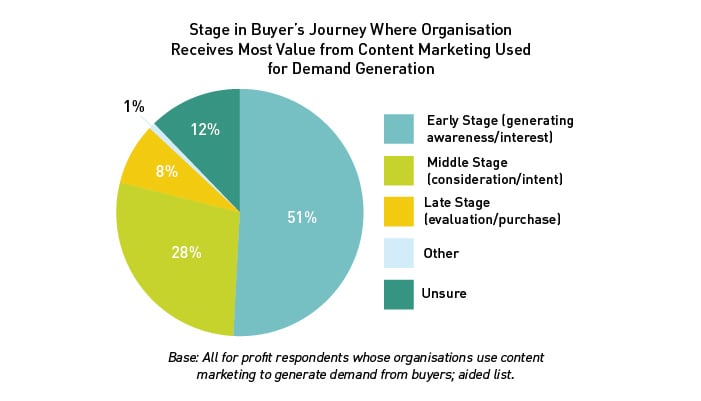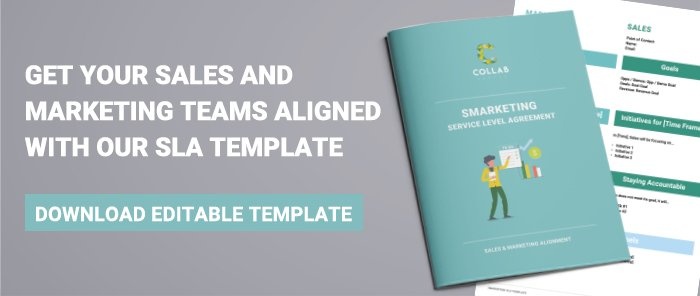HOW TO USE CONTENT MARKETING IN YOUR SALES FUNNEL TO GENERATE DEMAND
The Content Marketing Institute (CMI) found that 87% of B2B marketers use content marketing in their sales funnel to attract leads and drive engagement. Yet only 9% claim to be fully satisfied with their content strategy. .
With content such as video marketing returning a positive ROI for 88% of marketers, creating quality content that attracts organic traffic and drives sales is a very effective way of growing your business.
Here’s how you can incorporate content marketing into your sales funnel to generate demand.
7 ways to create content that drives sales
1. Document your Inbound Marketing strategy and editorial mission statement
These days it’s not enough to simply create a heap of content and post it online. You need a strategy that guides your efforts, outlines your goals, and establishes how you’re going to measure your success.
You need to develop a comprehensive inbound marketing strategy that lays out the steps you need to take to convert leads.
Your inbound marketing strategy should set out the following:
- Market research and insights
- Comprehensive buyer personas
- Goals, objectives and KPIs
- Content and actions for every stage of the customer journey
- Budgets, responsibilities and timelines
Once you have a comprehensives strategy that outlines your market, goals and KPIs, your team will know who they’re marketing and selling to, what they need to do to attract and convert leads, and how they’re going to measure their success.
As they say, ‘a failure to plan is a plan to fail’.
From the information in your content marketing strategy, you’ll be able to define your editorial mission statement, which is a simple statement of what you aim to achieve with your content, and what your audience will gain from it.
2. Get Sales and Marketing on the same page
Sales and marketing alignment is vital to a strong content marketing strategy. Your sales team know who your customers are and the questions that they’re asking. They also have the data and insights to successfully guide your content strategy.
It’s your marketing team’s job to distill these insights into content that’s scheduled and planned to reach the right customers with the right message at the right stage in the sales funnel.
It’s also their job to establish a consistent brand voice that develops trust with your business to help your sales team generate demand. They can also offer valuable feedback to the sales team on what content is working and why.
Working together, your team will be able to develop a marketing strategy that uses blog articles, emails, social media and re-targeting ads to nurture prospects, qualify leads, and ultimately convert them into customers.
Click here for the ultimate guide to B2B sales and marketing alignment
3. Focus content on the top and middle of the sales funnel
Insights from CMI show that different stages of the sales funnel offer different levels of demand generation.
Content offers the best ROI in the early stages of the sales funnel (awareness/interest), and the middle stages (consideration/intent). This means that your content strategy should focus on educating customers on the problems they face, and the potential solutions to their problems.

4. What content works best throughout the sales funnel?
There are many different types of content, from blogs and ebooks, to case studies and videos. Each type of content has its strengths and weaknesses, and each will have different levels of effectiveness throughout the sales funnel.
For example, the graphic below shows that blog articles and ebooks are more effective during the early stages of the customer journey, whereas case studies return better results in the later stages.

5. Quality content over quantity of content
While it’s been found that brands who post blog articles 16 times a month will see 3.5 times more organic traffic than those who don’t, it’s still more important to produce quality content than a lot of content.
Content that attracts organic traffic isn’t worth much if your visitors don’t want to read it. A high bounce-rate and a failure to generate demand will do more harm than good to your business.
Your content needs to resonate with your customers. It needs to be useful, relevant and engaging. Here are few tips for creating high-quality content that generates demand and builds trust with your audience.
- Create a team of internal and external contributors.
- Defer to an expert on the subject matter to ensure accuracy and authority.
- Create an editorial team to curate your content.
- Establish a consistent design style and tone of voice.
- Develop a content strategy that directs your content creation.
- Train internal staff to improve their content marketing skills.
- Analyse your performance so that you can refine your strategy and improve your results over time.
6. Promote and amplify your content
Once you’ve developed your content strategy, you need to get people reading it.
Organic reach will only take your content so far, which is why you’ll need to promote your content to get more people engaging with it. Search engine marketing (SEM) is a particularly effective platform for content promotion.
When your customers have a problem, one of the first places they search for a solution is online. If your content is the first thing to show up in search results, and can answer the questions your customers are asking, you’ve already gone a long way to building trust with that person.
Search engine marketing gives you the opportunity to offer information and guidance to your customers right when they need it most.
But content isn’t a set and forget strategy, it’s an ongoing process. Try to establish a schedule that allows you to consistently create, update and promote your content to keep your brand fresh and relevant online.
As the saying goes ‘you’ll be sweet if you repeat, repeat, repeat!’
7. Use lead scoring to determine content effectiveness
Lead scoring allows you to assign a numeric value to your prospects that ranks how likely they are to become a customer. This number is based on who they are, and how they’ve interacted with your brand in the past.
Using this methodology, you can focus your efforts on producing content that attracts and nurtures more qualified leads, which you can then pass on to sales.
Known as ‘marketing qualified leads’, these prospects often have a high level of engagement with your content (downloading documents, visiting pricing pages etc.) You can generate demand by designing your content to suit the needs and interests of these ‘high scoring’ leads.
Encourage your sales and marketing teams to work together when determining how they’re going to score leads. This will help sales and marketing decide what a quality lead looks like, so that your whole team is focusing their efforts on the right kind of leads.
A business that uses their sales team’s knowledge and insights to inform their content strategy will be able to attract leads and generate demand.Key takeaways:
- A strong content marketing strategy can guide your team to create quality content that generates demand.
- Align your sales and marketing teams to develop relevant and data-driven content.
- Different types of content work better at different stages in the sales funnel.
- Lead scoring can help you recognise the higher quality leads that your team should be focusing on
Want to know if your content is working?
Book your free 30-Minute Inbound Marketing Strategy Consultation to assess the strength of your content marketing strategy.


